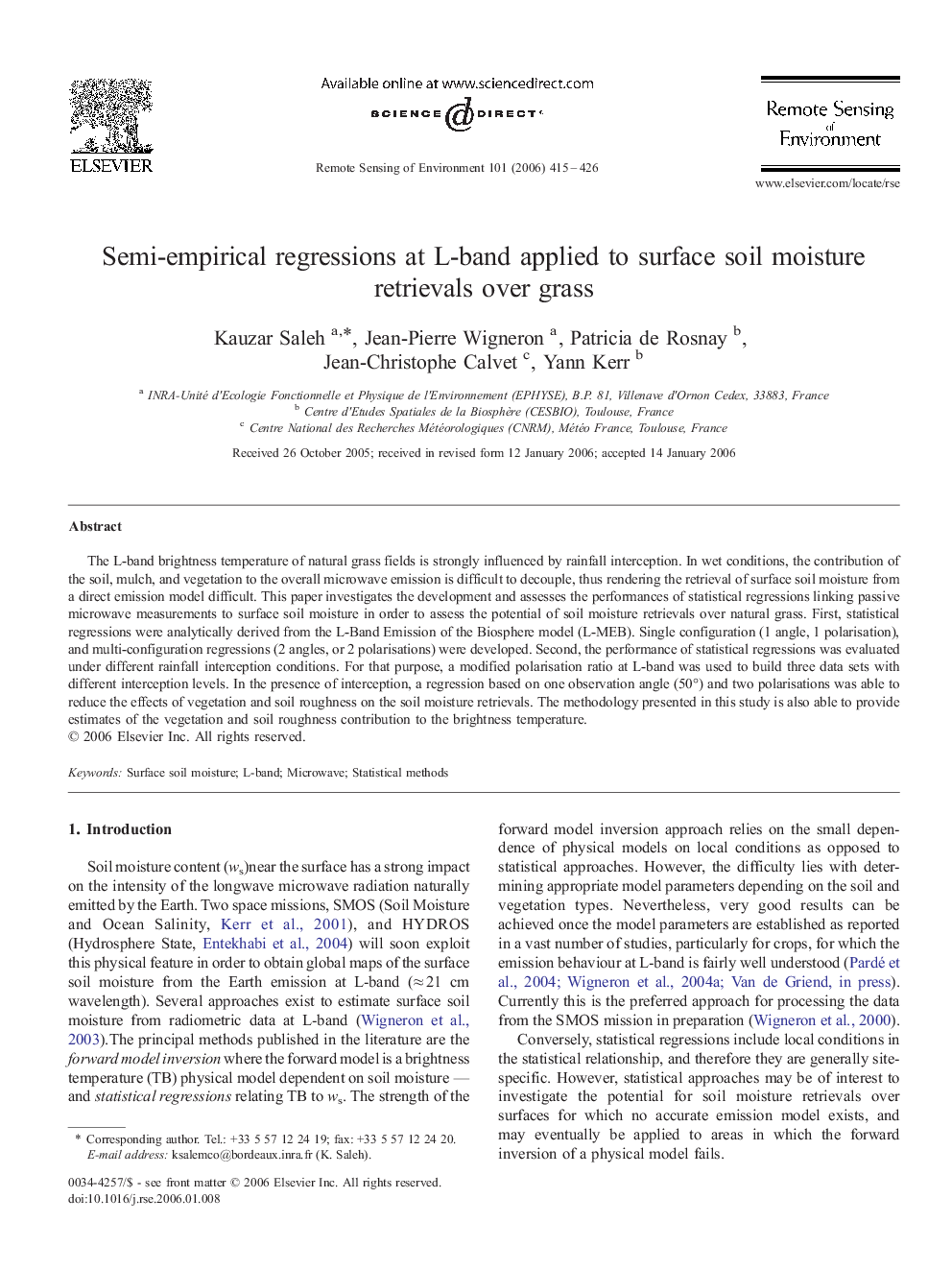| Article ID | Journal | Published Year | Pages | File Type |
|---|---|---|---|---|
| 4461101 | Remote Sensing of Environment | 2006 | 12 Pages |
The L-band brightness temperature of natural grass fields is strongly influenced by rainfall interception. In wet conditions, the contribution of the soil, mulch, and vegetation to the overall microwave emission is difficult to decouple, thus rendering the retrieval of surface soil moisture from a direct emission model difficult. This paper investigates the development and assesses the performances of statistical regressions linking passive microwave measurements to surface soil moisture in order to assess the potential of soil moisture retrievals over natural grass. First, statistical regressions were analytically derived from the L-Band Emission of the Biosphere model (L-MEB). Single configuration (1 angle, 1 polarisation), and multi-configuration regressions (2 angles, or 2 polarisations) were developed. Second, the performance of statistical regressions was evaluated under different rainfall interception conditions. For that purpose, a modified polarisation ratio at L-band was used to build three data sets with different interception levels. In the presence of interception, a regression based on one observation angle (50°) and two polarisations was able to reduce the effects of vegetation and soil roughness on the soil moisture retrievals. The methodology presented in this study is also able to provide estimates of the vegetation and soil roughness contribution to the brightness temperature.
